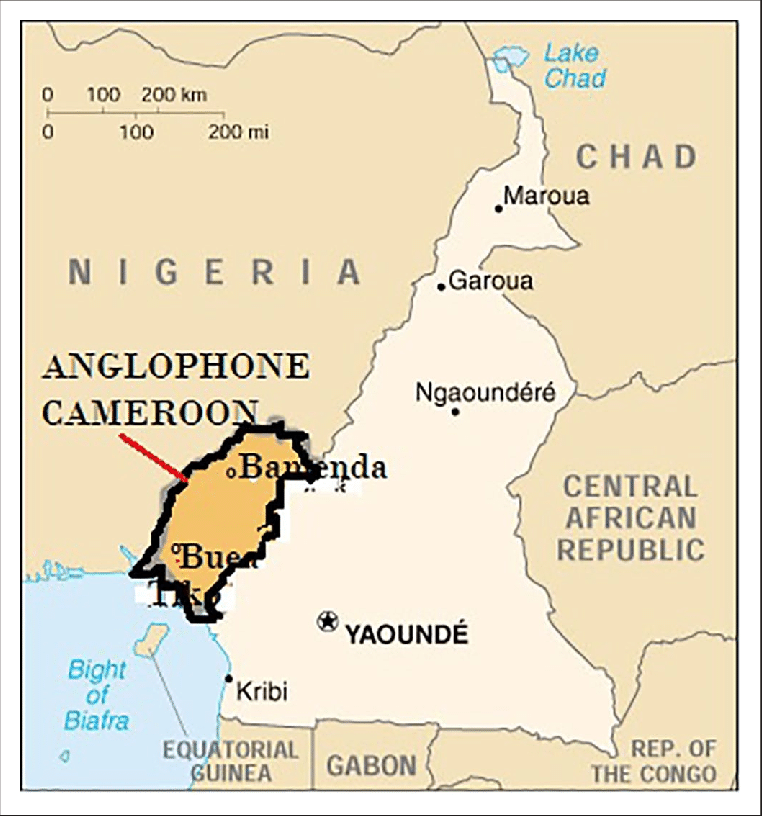Conflict in Cameroon: The Cost to a Nation
The Anglophone Crisis
Cameroon has long been a centre of conflict since the beginning of the Anglophone Crisis in 2016. The International Crisis Group stated that in Cameroon, Anglophones consist of 20% of the population. This crisis started as a result of a peaceful protest led by separationists that are made up of educators and lawyers for a secession of the two regions from Francophone’s Cameroon and to preserve the educational and legal systems. The government had initially ignored these protests, but after a school boycott suggested by civil society organisations and unions, the government decided to take firm action. This further escalated the situation which led to the government resorting to the use of concessions. Since then, The International Crisis Group said that many of the Anglophones have been without internet for more than three months alongside six months of strikes. This has led to many of them demanding federalism or a secession. Human Rights Watch stated that both armed groups and the government have committed mass human rights violations.
This map is from Research Gate
From Cameroon to Ambazonia
An article by the New Humanitarian stated that since the Anglophones have broken away from Cameroon, they have been calling for greater autonomy. This has led to the Anglophone calling for a new country named Ambazonia. As well as a call for a new country, the separatists created a new defence force entitled the Ambazonia Defence Force (ADF).
Human rights violations have taken place across the Anglophone regions of Cameroon as well as the far North. Human Rights Watch have estimated that since this crisis began, over 712,000 people have been displaced. These displacements took place in the Anglophone region as well as the Francophone Litteral, Central, and Western regions. While government soldiers did respond to these attacks, their aim is to target the civilians who live in the Anglophone region. On the 10th of January, government soldiers killed more than 9 civilians that lived in the South-West region. On the 10th of November, an explosive device was thrown into a lecture hall at a university. These attacks were then blamed on the Separatist fighters. Despite these attacks being perpetrated by the government, separatist fighters have been attacking civilians as well. They have been known to use assault, kidnapping and torture. Alongside these attacks, Boko Haram has increased the number of attacks in the north of the region.
The Separationists have led many attacks on civilians and have enforced a boycott on education. The United Nations Office for the Coordination of Humanitarian Affairs stated that since the fighting began, over 700,000 children have faced a disruption in their education. Furthermore the International Crisis Group said that many schools that are based in the Anglophone regions have not opened their schools. This is due to a strike that was imposed by the separationist militias. The government of Cameroon responded to this through the consideration of closing down community led schools that are based in the Anglophone region controlled by the separatists. A repercussion of this is the impact that it has had on girls who had previously attended schools. Families that are experiencing a reduction in their income are having to make a choice regarding schooling. Many families have chosen to send their boys to schools rather than their girls. Families that have fled to the Francophone regions have had to leave their children alone at home while parents are looking for new work.
As well as this, Human Rights Watch stated that separatist fighters have been attacking schools and threatening children, parents, and educators in a bid to prevent them from returning to schools. The schools that have been attacked are being turned into bases for weapons as well as places to torture hostages. Human Rights Watch also documented the killings of eleven students and five teachers who were murdered as a result of an attack on their school in the South-West region. Human Rights Watch estimated that over 268 students and educators have been kidnapped in separatist regions. The government of Cameroon responded to this through the endorsement of a Safe School Declaration. This is a political agreement that has been put into place to help ensure the safety of the school children, educators, and the schools themselves against armed conflict. Security forces have also been posted around school areas and the government has taken charge to prosecute any attacks on schools. Unfortunately, the attacks by separatists have continued.
Grounds for Resolution
A paper published by the Canadian Global Affairs Institute suggested that this crisis should be able to find grounds for a resolution. The lives of the people in Cameroon deserve stability in every sense of the word: economic, education, and freedom from being harassed. The Canadian Global Affairs Institute outlined 10 observations for peace and prosperity for those in Cameroon. One of these solutions stated is through the use of a transparent process for peace that would lead to a fair referendum. The aim of this is to right the wrong that took place during the 1961 British and UN auspices. This would eventually lead to an end of the economic and political marginalisation. The Canadian Global Affairs Institute stated that the reason why the government is heavily opposed to the idea of independence for Ambazonia is due to the idea of them ‘outshining’Cameroon. This is just one of the suggestions that have been laid out by the Canadian Global Affairs Institute.

